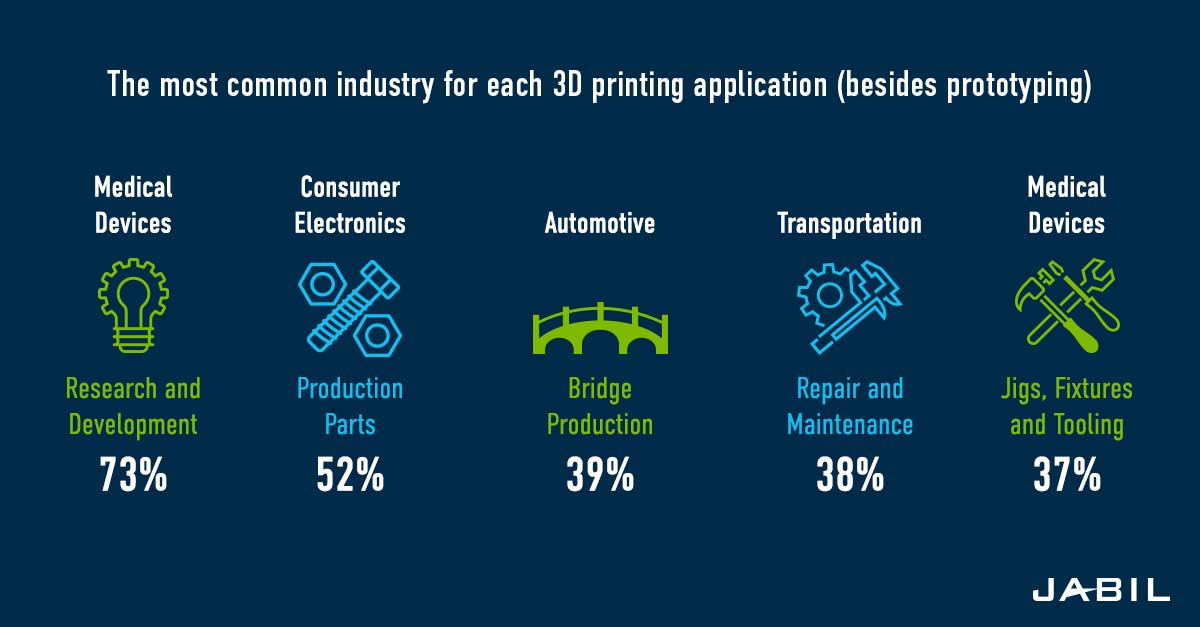In recent years, 3D printing has emerged as one of the most innovative and transformative technologies. Also known as additive manufacturing, it allows for the creation of three-dimensional objects using a layer-by-layer approach. This groundbreaking technology has the potential to revolutionize various industries, from manufacturing to healthcare and beyond. In this blog post, we will explore the fascinating world of 3D printing and its wide-ranging applications.
Understanding the 3D printing Basics
3D printing, also known as additive manufacturing, is a revolutionary technology that allows the creation of three-dimensional objects from a digital file. It has gained immense popularity in recent years due to its versatility and potential to transform various industries.
At its core, 3D printing involves a layered manufacturing process. It starts with a digital design file created using computer-aided design (CAD) software or obtained from a 3D scanner. The design file is then sliced into thin layers, and each layer is sequentially printed on top of the previous one.
The printing process itself utilizes different materials, including plastics, metals, ceramics, and even food ingredients. These materials are melted, extruded, or sintered to form the desired shape based on the design specifications. The printer follows the instructions provided by the design file to accurately deposit the material layer by layer until the object is complete.
One of the key advantages is its ability to produce complex geometries and intricate details that would be difficult or impossible to achieve using traditional manufacturing methods. It offers customization options, allowing individuals and businesses to create unique and personalized products.
In addition to its applications in product prototyping and manufacturing, 3D printing is also used in various fields such as healthcare, architecture, aerospace, and education. It has the potential to revolutionize medicine by enabling the production of patient-specific implants, prosthetics, and even functional human organs.
As the technology continues to evolve, 3D printing holds great promise for the future. With advancements in materials, printing speed, and affordability, it has the potential to democratize manufacturing and empower individuals to bring their ideas to life.
Applications in Manufacturing
3D printing, also known as additive manufacturing, has revolutionized the manufacturing industry by offering a wide range of applications. This innovative technology has found significant use in various manufacturing processes, proving its potential to transform traditional production methods. Here are some key applications of 3D printing in manufacturing:
- Prototyping: 3D printing allows manufacturers to create prototypes quickly and cost-effectively. It enables engineers to test and refine product designs before moving on to mass production, reducing time and expenses.
- Customization: With 3D printing, manufacturers can easily customize products to meet individual customer requirements. This level of personalization has significant implications for industries such as automotive, aerospace, and healthcare, where tailored components are crucial.
- Rapid Tooling: Traditionally, tooling for manufacturing processes can be time-consuming and expensive. 3D printing enables the production of custom tooling, reducing lead times and costs associated with traditional methods.
- Spare Parts Manufacturing: 3D printing allows manufacturers to produce spare parts on-demand, eliminating the need for large inventories. This approach improves supply chain efficiency and reduces downtime for equipment maintenance.
- Complex Geometry: 3D printing enables the production of complex geometries that are challenging or impossible to achieve with traditional manufacturing methods. This capability opens up new design possibilities and enhances product performance.
- Lightweight Structures: By utilizing advanced materials and optimized designs, 3D printing can produce lightweight structures without compromising strength. This is particularly beneficial in industries such as aerospace and automotive, where weight reduction is critical for fuel efficiency.
- Production of End-Use Products: In recent years, 3D printing has progressed to the point where it can directly manufacture end-use products. This eliminates the need for assembly processes and reduces time-to-market.
Overall, the application of 3D printing in manufacturing offers numerous advantages, including increased design freedom, reduced costs, improved efficiency, and enhanced product performance.
3D Printing Advancements in Healthcare
Advancements in healthcare have paved the way for transformative technologies, and one such innovation is 3D printing. This revolutionary technology has greatly impacted the healthcare industry, enabling remarkable advancements in patient care, medical research, and the production of customized medical devices.
One significant application is in healthcare is the production of patient-specific anatomical models. These models are created from medical imaging data and allow surgeons to visualize complex anatomical structures before performing intricate procedures. This technology has proven invaluable in surgical planning, leading to improved outcomes and reduced surgical risks.
Moreover, 3D printing has revolutionized the production of prosthetics and implants. Traditional manufacturing methods often result in generic devices that may not fit an individual’s unique anatomy. With 3D, medical professionals can create personalized prosthetics and implants that precisely match a patient’s requirements. This customization enhances comfort, functionality, and overall patient satisfaction.
Additionally, this has opened new avenues in drug delivery systems. By combining pharmaceuticals with 3D-printed structures, researchers can create intricate drug-release mechanisms that ensure precise dosing and targeted delivery. This approach holds great potential for personalized medicine and the treatment of complex conditions.
Furthermore, the field of bioprinting has emerged as a promising application of 3D printing technology in healthcare. Scientists are actively exploring the possibility of printing human tissues and organs using bioinks composed of living cells. This breakthrough could potentially revolutionize organ transplantation by eliminating the need for donors and reducing transplant rejection rates.
Impact on Design and Architecture
3D printing has revolutionized the fields of design and architecture, having a profound impact on the way objects and structures are created. This innovative technology allows designers and architects to turn their visions into reality with unprecedented ease, speed, and precision.
One of the most significant impacts is on design and architecture is the ability to create complex and intricate shapes that were previously impossible or extremely difficult to construct using traditional methods. This newfound freedom in form allows designers to push the boundaries of creativity and explore new possibilities in aesthetics and functionality.
Moreover, 3D printing has greatly accelerated the prototyping and iteration processes in design and architecture. Designers can now quickly produce physical models of their concepts, enabling them to test and refine their designs in a more efficient and cost-effective manner. This iterative approach promotes innovation and encourages designers to experiment with different ideas and concepts.
Furthermore, 3D printing has also brought customization to the forefront of design and architecture. With this technology, it is now possible to create personalized objects and structures tailored to individual needs and preferences. From custom-fit prosthetics to unique architectural elements, 3D printing empowers designers and architects to create highly personalized solutions that were once unimaginable.
Educational Opportunities
Educational opportunities in 3D printing have opened up a whole new world of possibilities for students and educators alike. This innovative technology allows individuals to create three-dimensional objects by layering materials, offering a hands-on approach to learning that enhances creativity, problem-solving skills, and critical thinking.
One of the main benefits of it is into education is its ability to bring abstract concepts to life. Students can design and print physical models of complex mathematical equations, anatomical structures, or architectural designs, enabling them to visualize and understand these concepts in a tangible way.
Furthermore, 3D printing encourages collaboration and teamwork. Students can work together to design and create objects, fostering communication and cooperation skills. They can also share their designs online and receive feedback from a global community of makers, enhancing their understanding and perspective.
In addition, the technology provides practical skills that are highly relevant in today’s technological world. By learning how to use design software and operate 3D printers, students develop valuable technical skills that can be applied in various industries such as engineering, manufacturing, and product design.
Moreover, 3D printing promotes innovation and entrepreneurship. Students can prototype their own inventions, bringing their ideas to life and exploring the potential for commercialization. This hands-on experience empowers students to become creators rather than just consumers of technology.
Future Possibilities
As the technology continues to evolve, the possibilities of 3D printing seem limitless. Researchers are actively exploring new materials that can be used in additive manufacturing, including conductive materials for electronics and bio inks for bio printing. The integration of artificial intelligence and machine learning algorithms is also expected to enhance the capabilities of 3D printers.
In addition to its practical applications, 3D printing has captured the imagination of artists and designers. The ability to transform digital creations into tangible objects has opened up new artistic avenues and challenged traditional notions of sculpture and craftsmanship.
 3D printing in Jewelry
3D printing in Jewelry
3D printing has revolutionized the jewelry industry, offering new possibilities for design and customization. With this technology, intricate and complex jewelry pieces can be created with precision and detail. Traditional manufacturing methods often require expensive molds and tooling, but it eliminates these costs by directly printing the jewelry using various materials like metals, resins, and even precious gemstones.
One of the key advantages of 3D printing in jewelry is the ability to produce unique and personalized pieces. Designers can easily experiment with different shapes, patterns, and textures, allowing for endless creativity. This technology also enables customers to customize their jewelry by incorporating personal messages or symbols.
Moreover, this technology reduces waste and environmental impact compared to traditional manufacturing processes. The precise nature of it ensures minimal material usage, making it a sustainable choice for jewelry production.
As the technology continues to advance, 3D printing in jewelry promises to bring innovative designs, increased accessibility, and a more personalized experience for both designers and customers.
Final Thoughts
In conclusion, 3D printing has emerged as a game-changing technology with vast potential in various industries. From manufacturing to healthcare, design to education, this revolutionary technology is transforming the way we create, innovate, and solve problems. As advancements continue to be made, we can expect even more exciting applications in the future.






